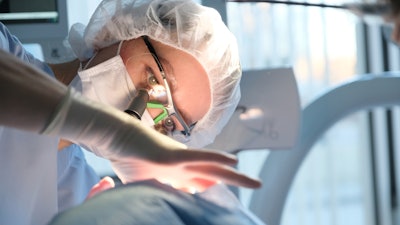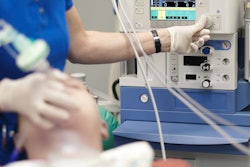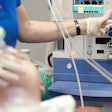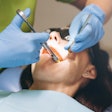
With more patients taking glucagonlike peptide 1 (GLP-1) agonists like Ozempic to control diabetes and obesity, clinicians may need to rethink how to manage them during dental anesthesia or sedation. A perspective was published in the Journal of Oral and Maxillofacial Surgery.
Due to possible risks of aspiration during procedures, clinicians should have thorough discussions with patients about using GLP-1 agonists prior to planned surgeries. Also, other options may need to be considered when time-sensitive procedures are needed and patients didn't refrain from taking their medications, the authors wrote.
"Given the uncertainty about the perioperative risks of GLP-1 agonists, OMSs (oral-maxillofacial surgeons) should exercise caution when managing patients taking these medications,” wrote the authors, led by Dr. Briana Burris of Massachusetts General Hospital in Boston (J Oral Maxillofac Surg, April 11, 2024).
In January, the American Association of Oral and Maxillofacial Surgeons (AAOMS) announced that it was evaluating whether anesthesia guidelines for oral surgeries needed be updated for patients who take GLP-1 agonists, like Ozempic, Wegovy, and Trulicity. At the time, the AAOMS House of Delegates tasked the organization's anesthesia committee with evaluating current anesthesia usage guidelines following guidance issued in June 2023 by the American Society of Anesthesiologists (ASA).
The ASA's guidance advises patients to refrain from using GLP-1 receptor agonists prior to undergoing elective surgeries due to potential adverse complications. While the ASA acknowledged a lack of scientific evidence on the topic, its current recommendation is to hold GLP-1 agonists on the day of surgery if a person is taking a daily dose, or one week prior to surgery if a patient is taking a dose weekly.
GLP-1 agonists have caught on to manage obesity and are used for weight loss because they delay gastric emptying, which can help a person feel full. Their effect on gastric emptying, which may cause vomiting and nausea, also may lead to surgical risks. There have been reports of patients taking GLP-1 agonists aspirating gastric content perioperatively, according to the perspective.
To minimize perioperative complications, clinicians should discuss the usage of GLP-1 agonists, including the formula, duration, and last dose, with all patients planning to undergo procedures to ensure optimal surgical timing, the authors wrote.
Whenever feasible, procedures should be completed under local anesthesia for patients who didn't stop taking GLP-1 agonists but need urgent procedures. In cases in which these patients require a deeper level of sedation, general anesthesia in an operating room may be preferable setting to sedation in a dentist's office.
If patients appropriately withheld food and fluids per preoperative guidelines, oral maxillofacial surgeons can discuss with an anesthesiologist whether the patient should be managed as if they had a full stomach. Furthermore, rapid sequence induction with passage of an orogastric tube to empty gastric contents intraoperatively may be an option to lower the risk of aspiration during emergence, they wrote.
"Moving forward, OMSs should continue to remain updated on the latest guidelines and help generate high quality evidence regarding the perioperative management of GLP-1 agonists to optimize the safety of patients undergoing anesthesia," Burris and colleagues wrote.



















